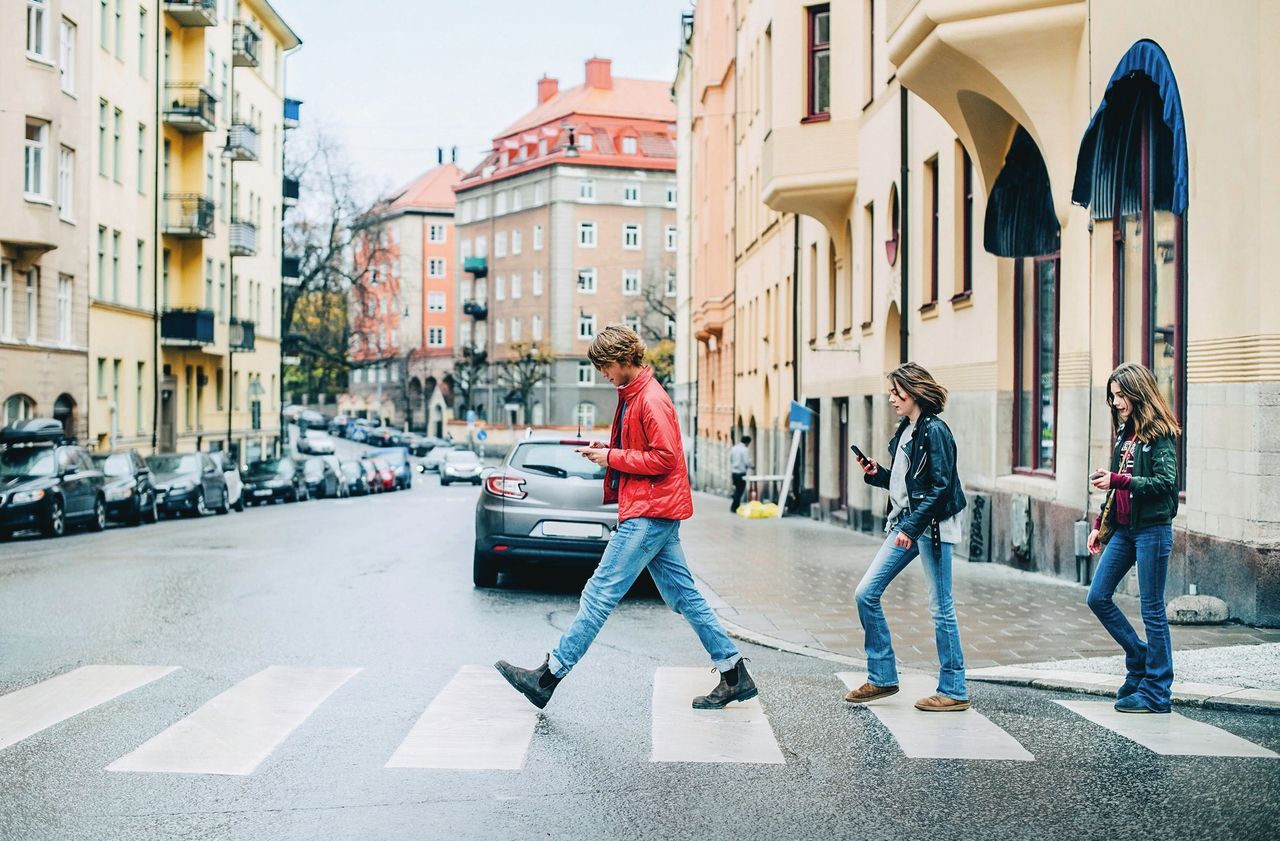Aaron Levin has an appointment. Tonight in autumn 2012, the 61-year-old brand identity creative director leaves the Paris metro at Porte Maillot, tumbles onto the forecourt of the Palais des Congrès, then, without stopping to walk, draws his smartphone and heads for towards the cafe where it is expected. A few meters further, bing! Aaron collapses. "I hit my head against an outside escalator," he explains. My eyes were riveted on my mobile, I didn't see anything coming. "
Stunned, disoriented, Aaron is unable to get up. His scalp is affected, the wound is bleeding. He wiped his head as best he could, then called the police. After a diagnosis made over the phone, the medical assistant assured him that his impressive but minor injury did not require special care. Aaron will still take thirty minutes to recover his spirits, then to get up.
Eight years later, in 2020, more and more pedestrians taped to their cellphones are on the sidewalks. So numerous that they were given a name: "smombie", contraction of the words "smartphone" and "zombie". Zombie, because they walk slowly, head down, their eyes locked on the screen, made blind to their environment, and sometimes even isolated from noise when they wear a headset.
A danger for motorists
These new kinds of “living dead” are not aggressive, but their inattention turns out to be dangerous. Especially for them. A study, published at the end of 2019 in the American scientific magazine Jama, listed the injuries linked to the use of mobile phones over the last twenty years in the United States. As a result, 60% of the victims are between 13 and 29 years old and present for the most part the same type of injuries as Aaron: small wounds or bruises on the head or neck that do not require hospitalization.
The review, however, warns about the scars that sometimes lead to surgery in order to be removed. According to the study, these operations cost the American healthcare system three billion dollars a year. The authors note that before 2007 and the arrival of the first iPhone on the market, these accidents were much less frequent. Before, mobile phones were already popular, but their functions were limited and therefore offered fewer possibilities for entertainment than recent smartphones.
Not very dangerous for other pedestrians, "smombies" become so as soon as their road crosses that of motorists. A survey conducted in France by the manufacturer Ford, in April 2019, points to the extent of the phenomenon: 65% of French people recognize that they consult their phone while walking on the sidewalk or crossing at a pedestrian crossing according to a study carried out by the YouGov institute April 10 and 11, 2019 with a sample of 1,003 people aged 18 and over, compared to just over 50% in 2015. And this figure explodes among the youngest: 91% of 18-34 years old confess to carrying on a portable conversation by hand while engaging on the road. In total, 6% of them have already had an accident.
"Drop your screen!"
In Tours (Indre-et-Loire), the national police launched in 2017 a prevention campaign for adolescents, entitled "Be careful, let go of your screen!" But the initiatives taken in France stop there.
Newsletter - The essentials of the news
Every morning, the news seen by Le ParisienI'm registering
Your email address is collected by Le Parisien to allow you to receive our news and commercial offers. Find out more
To find remedies for the distraction of "smombies", it is rather necessary to look abroad. In Israel, for example, where the municipality of Tel Aviv equipped one of its crossroads with LED light strips in March 2019. These work like traffic lights, unlike they warn, on the ground , pedestrians preparing to cross the road.
The city of Seoul, in South Korea, has bet on an even more technical solution: a radar sensor and a thermal camera detect the arrival of vehicles and flash lights installed in the roadway. If that is not enough, pedestrians can download a smartphone application sending them a warning message when they arrive near the zebra crossing.
And when the state struggles to set up a device to wake up the zombies, it sanctions. Thus, the Italian commune of Sassari, in Sardinia, has allowed since 2018 its municipal police officers to impose a fine of 22 euros on residents who cross the street without taking their eyes off their cellphones.
Same principle in Honolulu, the capital of the State of Hawaii (United States), where the amount of the fine is fixed at 13 euros, but increases very quickly in the event of recidivism, reaching even 440 euros if is a third breach of the law. To wake up the dead, knock them on the wallet!














